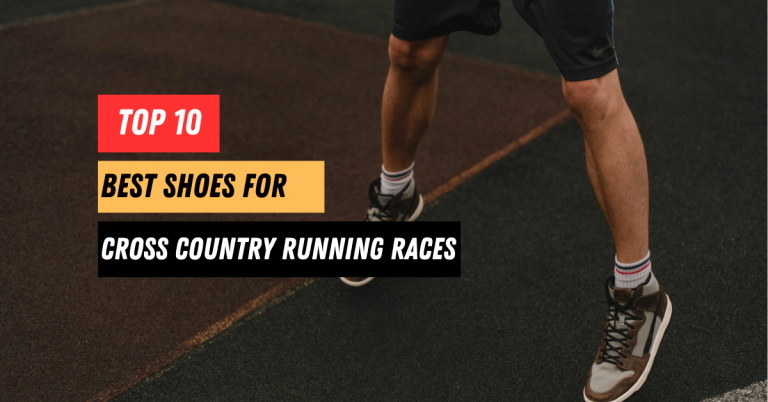Discover the Best Insoles for New Balance Shoes You NEED
Choosing the right insoles for New Balance shoes can dramatically improve comfort, stability, and overall performance. While New Balance footwear is already known for its supportive design, not every foot shape or condition benefits from a standard insole. The correct insole can address common issues like flat feet, overpronation, plantar fasciitis, or long hours of standing and walking. Poorly fitted or low-quality insoles, on the other hand, may cause discomfort, pressure points, or even worsen foot pain. For athletes, professionals, and casual wearers alike, upgrading insoles is an effective way to maximize the shoe’s potential. Whether you’re seeking enhanced arch support, better cushioning, or specialized orthopedic benefits, choosing the right insole for your New Balance shoes ensures safety, reduces injury risk, and enhances performance for daily use, workouts, and recovery.
Top 10 Insole Reviews for New Balance Shoes
1. Superfeet Green (High-Profile, High-Volume)
The Superfeet Green is a firm, high-profile insole that pairs well with roomier New Balance models. It uses a deep heel cup to center the calcaneus and cut down on excess motion. A stabilizer cap reinforces the arch so the shoe midsole doesn’t do all the work. The top cover reduces friction and helps manage moisture on long days.
In walking and running, the Green feels structured rather than squishy. The rigid arch keeps your foot from collapsing as you load the midfoot. Heel impact is muted without feeling mushy or slow. The overall ride stays consistent even after months of use.
This insole shines for flat, flexible feet that overpronate in softer NB midsoles. It also helps neutral feet that get tired on concrete floors. High-arch feet may still like the heel control even if they need a touch more forefoot give. Trim lines make fitting straightforward in most sizes.
Fit is best in New Balance shoes with generous volume and a removable liner. If your NB is shallow, expect a slightly snugger instep. Break-in is short, but give it a few outings to settle. After that, support feels predictable and locked-in.
Longevity is a strong suit, with the shell holding shape for many months. The Green is a reliable “set it and forget it” option.
Pros
-
Deep heel cup stabilizes rearfoot
-
Firm arch control for overpronation
-
Durable shell maintains shape
-
Moisture-wicking top cover
Cons
-
Feel is firm, not plush
-
Can crowd low-volume shoes
-
Limited forefoot cushioning for forefoot strikers
2. PowerStep Pinnacle (Full-Length, Dual-Layer EVA)
PowerStep Pinnacle blends semi-rigid support with a cushioned top layer. The shell guides the arch while EVA foam smooths out pressure. A textured fabric cover helps reduce heat and slip. The design targets everyday comfort without losing control.
Underfoot, the Pinnacle rides balanced and lively. Arch support is assertive but not harsh. Heel-to-toe transitions feel natural in popular New Balance walking and training models. Forefoot cushion takes the sting out of long shifts on hard floors.
This is a strong match for neutral to flat arches needing guidance plus comfort. It tames inward roll in softer NB foams without feeling orthopedic. For high arches, the platform offers enough contour to keep the midfoot engaged. The dual-layer build cushions more than most rigid shells.
Fit is forgiving in medium-volume New Balance lasts. The profile is moderate, so lace pressure rarely spikes. Trimming is simple, and edges sit flush when cut carefully. Most users adapt within a day. Durability is very good for a foam-topped support insole. The shape holds and the cover resists pilling with normal use.
Pros
-
Balanced support and cushioning
-
Works across many NB categories
-
Easy break-in and trimming
-
Grippy top cover reduces slip
Cons
-
Not as controlling as a true rigid shell
-
Foam can compress for heavier users
-
Warm conditions may soften feel slightly
3. Currex RunPro (Dynamic, Activity-Tuned)
Currex RunPro aims for dynamic guidance rather than rigid posting. The arch is flexible and responds as you load and unload. A deep-ish heel pocket centers impact without a hard lip. Forefoot pads add rebound where strides need it most.
The ride is smooth for New Balance running silhouettes. You get guidance through the gait cycle without a braced sensation. Because the arch flexes, transitions stay quick. The forefoot feels agile on tempo runs and long walks alike.
RunPro comes in arch-specific profiles to match foot shape. This makes selection straightforward for low, medium, or high arches. Runners who dislike stiff shells usually click with this feel. Walkers who want motion help without bulk also do well.
Fit is friendly in most NB models with removable liners. Volume is moderate, so it rarely crowds the toe box. The top cover manages sweat and keeps feet planted. Trim lines are accurate, and edges stay tidy after cutting. Longevity is solid given the flexible design. The insole keeps its spring longer than typical soft inserts.
Pros
-
Dynamic support that moves with you
-
Arch-height matching for better pairing
-
Quick, lively transitions in NB runners
-
Comfortable for long miles or all-day wear
Cons
-
Less corrective for severe overpronation
-
Price is higher than basics
-
Flexy feel may seem unfamiliar at first
4. Sof Sole Athlete (Cushion-Focused, Everyday)
Sof Sole Athlete is a comfort-first insole that adds plushness to firmer New Balance shoes. The full-length foam softens impact on concrete and tile. A gel heel and forefoot pad take the brunt of step-down forces. The top fabric reduces hot spots across long shifts.
Underfoot, the feel is distinctly cushioned and friendly.
It’s a notable upgrade in NB models that feel firm with stock liners. Heel landings quiet down, and forefoot push-off feels less sharp. The arch is gentle, so support is present but unobtrusive. This is an excellent match for neutral feet that crave comfort.
It also helps high-arch feet that just want padding under the met heads. If you overpronate heavily, pair it with a more supportive New Balance shoe to balance things out.
Fit is easy thanks to a modest profile and straightforward trimming. Volume increase is minimal in most NB lasts. The insole beds in quickly, often within a day. Once settled, it keeps a consistent, cushy character. Durability is good for a comfort insole, with foam holding up across months of daily wear.
Pros
-
Plush step-in comfort for firm NB models
-
Gel zones soften heel and toe-off
-
Low-profile fit with simple trimming
-
Great for standing and casual miles
Cons
-
Limited motion control for overpronation
-
Softer foam can pack down faster for heavier users
-
Not ideal for speed-focused running
5. Spenco Polysorb Cross Trainer (Shock Absorption + Stability)
Spenco’s Polysorb Cross Trainer targets shock absorption with a supportive feel. The heel center is cushioned yet steady on impact. A mild arch contour helps alignment without feeling rigid. The top fabric manages moisture and reduces shear inside the shoe.
In New Balance trainers and walkers, the ride is stable and forgiving. Heel strikes are toned down, and midfoot feels guided. Forefoot cushioning keeps pacing comfortable during longer sessions. The insole keeps the platform feeling level and composed.
This model suits a wide audience, from neutral feet to mild overpronators.
It’s ideal if you find stock NB liners too thin under heel and ball. It also pairs well with firmer midsoles to add give without losing shape. The overall character is balanced and dependable.
Fit is uncomplicated thanks to moderate thickness and clean trim lines. Most NB shoes with removable liners accommodate it easily. A short break-in allows the foam to settle. After that, the shape remains steady for months.
Durability is a highlight, with materials resisting collapse under daily mileage.
Pros
-
Strong shock absorption for repetitive impact
-
Mild guidance that doesn’t feel rigid
-
Moisture-managing top cover
-
Works well in trainers and walkers
Cons
-
Arch support is moderate, not maximal
-
Slightly heavier than ultra-minimal inserts
-
Cushion feel is stable rather than bouncy
6. Dr. Scholl’s Running Insoles (Massaging Gel Advanced)
Dr. Scholl’s Running Insoles are a budget-friendly option designed to boost comfort in athletic footwear, including New Balance running shoes. They use responsive gel pads under the heel and forefoot to absorb shock and reduce fatigue. A flexible arch design adapts to different foot shapes, making them approachable for casual and athletic use.
On the road, these insoles provide a softer step without changing shoe mechanics drastically. Heel strikes are gentler, while forefoot gel pads encourage smooth toe-off. The arch contour is minimal, which benefits runners who don’t want rigid correction but need fatigue relief. The massaging gel feel is noticeable, especially during long runs or walks.
This insole suits neutral runners and walkers best. If you need structured control for overpronation, it may not provide enough guidance. However, for those seeking cushioning that doesn’t interfere with stride, it performs well. High-arch users may appreciate the forefoot padding even if arch support is light.
Fit is straightforward thanks to its trim-to-fit design. They work in most New Balance models with removable insoles, including running and casual lines. Volume increase is modest, so they rarely crowd the shoe. Break-in is immediate, offering instant comfort without adjustment.
Durability is decent given the gel construction, though heavy runners may notice faster compression. Still, for everyday use, they strike a solid balance of price and comfort.
Pros
-
Gel pads soften heel and forefoot impact
-
Trim-to-fit design for easy sizing
-
Immediate comfort with no break-in period
-
Affordable compared to premium insoles
Cons
-
Limited arch support
-
Gel can compress faster under heavy mileage
-
Not corrective for overpronation
7. Spenco Total Support Max
Spenco Total Support Max is built for those who need firm, corrective support. It features a rigid arch plate, deep heel cup, and shock-absorbing forefoot padding. The design is stiffer than many comfort insoles, making it effective for severe overpronators or flat feet.
On foot, the Max delivers structured guidance. The arch plate resists collapse, keeping stride alignment steady. Heel impact feels cushioned but not spongy. During longer activities, the insole maintains control without feeling overly restrictive. Compared with softer models, transitions are firmer and more deliberate.
This insole is ideal for users who want strong correction inside New Balance walking or training shoes. It particularly benefits those with flexible flat feet or chronic pronation issues. Neutral or high-arch feet may find it overly stiff, but stability-seekers will appreciate its firmness.
Fit works best in roomy NB shoes with removable liners, as the insole takes up extra volume. Break-in may feel abrupt, but support becomes more comfortable after a week of wear. The structured platform rewards patience with consistent control.
Durability is excellent, with the rigid plate resisting deformation over months of use. It is a long-lasting option for those who prioritize correction over plushness.
Pros
-
Rigid arch plate corrects overpronation
-
Deep heel cup improves alignment
-
Long-lasting structure and support
-
Good choice for flat feet
Cons
-
Too stiff for neutral/high arches
-
Can feel bulky in narrow NB shoes
-
Longer break-in period required
8. New Balance Ultra Support Insole
Made by New Balance itself, the Ultra Support insole is tailored to complement their footwear. It uses a reinforced arch, cushioned heel pad, and anti-blister top cover. The design focuses on combining stability with comfort in athletic and casual NB shoes.
Underfoot, it provides balanced control. The arch support is medium-firm, keeping the midfoot aligned without overwhelming the stride. Heel cushioning reduces jarring impacts, while forefoot foam adds smoothness during push-off. The top fabric minimizes heat and friction, ideal for long sessions.
This insole is versatile, working for neutral feet, mild overpronators, and even high arches that prefer moderate contouring. It particularly benefits NB training shoes like 860 or 880, where comfort and support blend together.
Fit is seamless in most NB shoes since the insole was designed by the same brand. Trimming is rarely necessary, and volume stays true to the shoe’s original design. Break-in is minimal, with comfort evident from the first wear.
Durability is dependable, with NB’s construction maintaining shape over extended use. For those loyal to the brand, it offers a trustworthy upgrade to stock insoles.
Pros
-
Designed specifically for NB shoes
-
Balanced arch support for multiple foot types
-
Anti-blister top cover
-
Cushioned heel for impact protection
Cons
-
Support not as rigid as medical orthotics
-
Slightly pricier than generic insoles
-
May feel average for extreme arch needs
9. SOLE Active Medium Insoles
SOLE Active Medium is a heat-moldable insole that allows customization. It uses EVA foam with a moldable arch that adapts to your foot shape after heating or natural wear. A deep heel cup and durable top sheet enhance alignment and longevity.
Walking and running feel tailored after molding. The arch rises to meet the foot, providing personalized support. Heel cushioning is firm but protective, while forefoot transitions remain smooth. Over time, the insole feels more natural than rigid shells.
This insole is excellent for users seeking semi-custom support without the price of prescription orthotics. It works well for medium arches and adapts for mild flat or high arches. The adaptability makes it versatile for various NB models.
Fit is slightly thicker than stock NB insoles, so it works best in medium-to-roomy shoes. Heat molding ensures accuracy, though wearing them naturally will also form the arch to your foot. Break-in depends on the method chosen but usually feels natural after a few wears.
Durability is a highlight, with EVA foam resisting compression. The molded shape holds for many months, making it a smart long-term investment.
Pros
-
Heat-moldable for semi-custom fit
-
Durable EVA foam construction
-
Adaptable to different arch heights
-
Long-lasting support and comfort
Cons
-
Requires molding for best results
-
Slightly bulkier than thin liners
-
Higher cost than basic insoles
10. Tread Labs Ramble Comfort Insoles
Tread Labs Ramble Comfort insoles are modular, featuring a firm arch support base paired with replaceable foam top covers. They emphasize long-term value and customizable comfort. The design stabilizes the foot while cushioning step-down forces.
On foot, they feel structured yet forgiving. The firm base keeps arches supported, while the top cover softens landings. Heel stability reduces fatigue, and forefoot foam smooths transitions. Over time, the replaceable cover extends lifespan and keeps freshness intact.
These insoles are best for those who want durability and adjustability inside New Balance shoes. Flat or neutral feet benefit most from the steady arch platform. High arches may need the higher-profile version offered by the brand.
Fit is straightforward, with medium thickness fitting well in most NB models. Trimming is minimal, and top covers are easy to swap. Break-in is short, with comfort increasing as foam adapts.
Durability is unmatched, as the shell can last for years with only top cover replacements. This makes them a cost-effective option for frequent insole users.
Pros
-
Modular design with replaceable top covers
-
Firm arch support for stability
-
Long-term durability
-
Customizable with different arch profiles
Cons
-
Higher initial price
-
Base may feel too firm for some users
-
Requires replacement covers for best hygiene
Buyer’s Guide
When selecting the best insoles for New Balance shoes, several factors determine how well they will perform for your specific needs. Below are the most important criteria to consider, along with practical advice on what to avoid.
1. Arch Support
Your foot’s arch type is critical when choosing insoles. High arches need firm but cushioned support to prevent strain, while flat feet benefit from structured insoles that stabilize the heel and control overpronation. Neutral arches require balanced insoles that enhance natural alignment without forcing correction. Avoid one-size-fits-all insoles that don’t specify arch type, as they may not provide adequate support.
2. Cushioning and Shock Absorption
Many New Balance shoes come with decent cushioning, but insoles with additional shock absorption can reduce fatigue during running, walking, or long standing shifts. Gel-based or memory foam insoles absorb pressure effectively, while EVA foam offers lightweight responsiveness. Stay away from overly soft insoles that flatten quickly; they often lose support within weeks.
3. Fit and Compatibility
Insoles should match the shape and size of your New Balance shoes. Trim-to-fit models are versatile but require careful cutting to avoid uneven edges. Full-length insoles are ideal for replacing factory liners, while ¾-length insoles can add targeted support without crowding the toe box. Avoid insoles that lift your heel too high, as they can alter shoe fit and cause instability.
4. Durability
High-quality insoles should last at least 6–12 months with regular use. Look for insoles with reinforced heel cups, durable top covers, and multi-layer construction. Cheaper options often wear down quickly, forcing frequent replacements.
5. Special Foot Conditions
If you suffer from plantar fasciitis, metatarsalgia, or heel pain, choose insoles designed specifically for these conditions, with extra heel cushioning and arch reinforcement. Diabetic-friendly insoles focus on pressure relief and smooth surfaces to prevent irritation. Avoid generic insoles that don’t address your particular issue, as they may worsen discomfort.
6. Activity Type
Consider whether the insoles will be used for running, walking, training, or work. Running insoles emphasize shock absorption and energy return, while work insoles focus on cushioning and all-day comfort. Choose insoles designed for your lifestyle rather than using a single pair for every activity.
By carefully balancing support, comfort, durability, and compatibility with your New Balance shoes, you can find insoles that enhance both performance and long-term foot health.
FAQ
What type of insoles work best with New Balance running shoes?
Running shoes benefit most from insoles with shock absorption and arch support. Look for lightweight EVA or gel insoles that cushion impact during repetitive motion. Runners with flat feet may prefer structured insoles, while those with high arches need added padding.
Can I replace the original insoles in my New Balance shoes?
Yes, most New Balance shoes come with removable insoles, making it easy to replace them with custom or aftermarket options. Removing the factory insole before inserting a replacement ensures a better fit and avoids crowding the shoe.
Are custom orthotics better than standard insoles for New Balance shoes?
Custom orthotics provide tailored support for specific medical conditions, making them superior for long-term foot health if prescribed by a podiatrist. However, high-quality over-the-counter insoles often provide sufficient support and are more affordable for general use.
How do I know when to replace my New Balance insoles?
Replace insoles when they lose cushioning, feel flat, or show visible wear like cracks, compressed foam, or peeling fabric. A general guideline is every 6–12 months depending on usage frequency. Heavy runners or workers on their feet all day may need replacements sooner.
Do insoles affect shoe size or fit?
Yes, thicker insoles can reduce interior shoe space, potentially making them feel tight. To maintain comfort, choose insoles with low-profile designs or trim-to-fit models. Always test insoles while wearing your usual socks to confirm proper fit.
Are gel insoles better than foam insoles for New Balance shoes?
Both have benefits. Gel insoles excel at absorbing shock and reducing pressure points, making them ideal for standing long hours. Foam insoles, especially EVA or memory foam, offer lightweight comfort and responsiveness. The choice depends on whether you prioritize softness or energy return.
Can I use the same insoles in multiple pairs of New Balance shoes?
Yes, insoles can be moved between shoes if they fit properly. However, frequent removal may wear them out faster. For convenience and durability, it’s often better to have a dedicated pair of insoles for each frequently used shoe.
Conclusion
Selecting the right insoles for New Balance shoes ensures better comfort, improved stability, and long-term foot health. From rigid corrective options to cushioned everyday picks, insoles can transform performance and reduce fatigue. By focusing on fit, durability, and support, you can choose insoles that not only protect your feet but also enhance overall safety and functionality.







